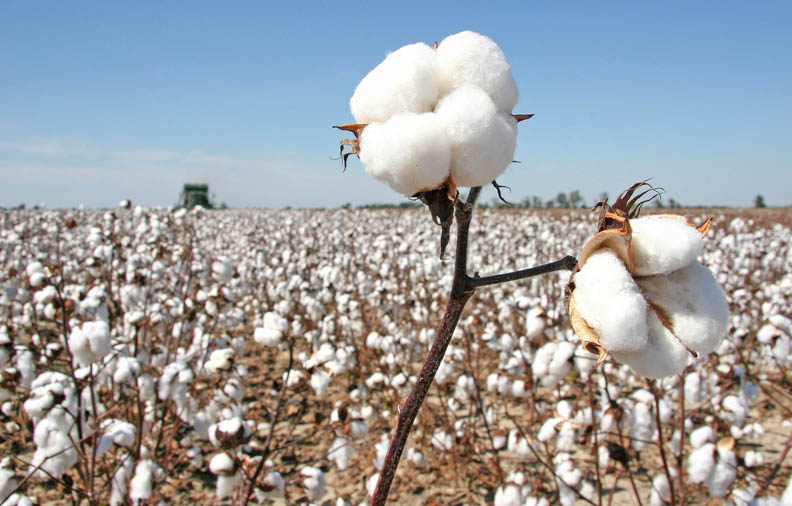
India’s cotton export ban will remain in place – for now
India's confirmation of an export ban on cotton means users of cotton will start to look elsewhere for supplies, including the United States.Meanwhile, USDA latest report on supply and demand lowered estimated mill use for cotton 100,000 bales from last month, and raised ending stocks to 3.9 million bales.Higher supplies and lower consumption resulted in an increase of nearly 1.6 million bales in forecast global ending stocks.

India has confirmed that its export ban on cotton will remain in place despite the uproar from various international entities including China, which had the most cotton bought but not yet shipped. The ban was first announced on March 5.
In a statement on USDA's March 9 World Agricultural Supply and Demand Estimates, Sharon Johnson Crump, analyst with First Capital Group said, “If the Indian government follows a similar pattern as in April 2010, the ban will be eventually lifted, but if it occurs several weeks from now, buyers would have moved on to other suppliers such as the United States.”
Here's more information the WASDE report:
Cotton
Estimated mill use was reduced 100,000 bales from last month, and ending stocks were raised to 3.9 million bales. Higher supplies and lower consumption resulted in an increase of nearly 1.6 million bales in forecast global ending stocks.
India export forecast of 7.75 million bales assumes that the ban on further exports announced March 5, 2012, remains in place. Forecast world imports were raised 1.35 million bales, due mainly to a 1.5-million-bale increase in imports by China, where nearly 40 percent of domestic production has been placed in the government reserve. Based on these revisions, China’s ending stocks are now projected at just over 20 million bales.
Rice
The 2011-12 all rice import forecast was raised 1 million hundredweight to 20 million, all in long-grain rice, largely due to a noticeable increase in fragrant rice imported from Thailand and India. Combined medium- and short-grain rice was increased 1 million hundredweight to 32 million, and conversely, the long-grain projection was lowered the same amount to 57 million. Rough rice exports were lowered 1 million hundredweight to 31 million, which is offset by an increase in the combined milled and brown export forecast to 58 million.
All rice ending stocks are projected at 40.5 million hundredweight, up 1 million from a month ago. Long-grain rice ending stocks are projected at 23.6 million hundredweight, up 2 million from last month, and combined medium- and short-grain rice stocks are forecast at 14.2 million, down 1 million from a month ago.
Global 2011-12 ending stocks are raised 200,000 tons to 100.3 million, up 2.5 million from the previous year, and the largest since 2002-03.
Soybeans and corn
U.S. soybean exports are unchanged at 1.275 billion bushels. Brazil soybean production is forecast at 68.5 million tons, down 3.5 million tons from last month due to lower projected yields resulting from hot, dry conditions in the southern states. Argentina soybean production was reduced 1.5 million tons to 46.5 million. Despite improved weather in recent weeks in much of the country, lower yields are projected due to continued warm, dry weather through February in northeastern growing areas.
Balance sheets for corn and sorghum are unchanged from the previous month.
Wheat
U.S. wheat ending stocks for 2011-12 are projected 20 million bushels lower this month as lower food use was more than offset by higher exports. Global wheat supplies for 2011-12 are nearly unchanged. Global wheat consumption for 2011-12 was raised 3.5 million tons. Global ending stocks for 2011-12 are projected 3.5 million tons lower.
About the Author(s)
You May Also Like





